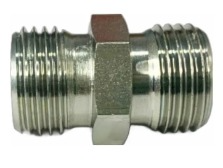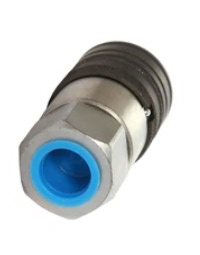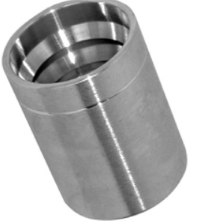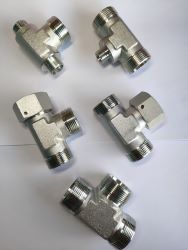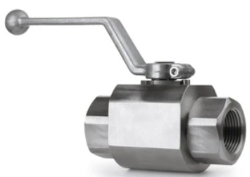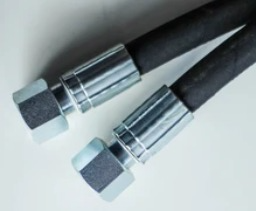Hydraulic systems are the backbone of many industrial applications, from heavy machinery to aerospace technology. Understanding the basic hydraulic fittings and their components is essential for anyone involved in hydraulic systems. In this comprehensive guide, we will delve into the world of hydraulic fittings, exploring their components, functions, and importance in various industries.
Hydraulic Fittings: The Cornerstone of Fluid Power
Hydraulic fittings are the unsung heroes of hydraulic systems, connecting various components to ensure the smooth flow of fluids. They play a pivotal role in controlling, directing, and regulating hydraulic fluid within a system. Let’s break down the key aspects of hydraulic fittings.
Types of Hydraulic Fittings
Hydraulic fittings come in various types, each designed for specific applications. Here are some common types:
Hydraulic Adapters: These connectors enable the transition from one thread type to another, ensuring compatibility between different components.
Hydraulic Couplings: Couplings provide a quick and secure method of connecting and disconnecting hydraulic lines, reducing downtime during maintenance.
Hydraulic Ferrules: Ferrules are used to crimp onto hoses, ensuring a leak-free connection between the hose and fitting.
Hydraulic Elbows and Tees: Elbows and tees are designed to change the direction of hydraulic fluid flow, allowing for flexibility in system design.
Hydraulic Valves: Valves control the flow and pressure of hydraulic fluid, contributing to system efficiency and safety.
Hydraulic Hose Ends: These fittings attach hoses to hydraulic components, providing a secure and reliable connection.
Components of a Hydraulic Fitting
To understand hydraulic fittings fully, it’s crucial to grasp the components that make them functional:
Body: The main structure of the fitting, which houses the other components.
Nut: The nut secures the fitting to the component and provides a tight seal.
Sleeve: The sleeve, also known as the ferrule, compresses onto the hose to create a leak-free connection.
Threads: Threads on the fitting allow it to connect to other components or adapters.
Seat: The seat provides a sealing surface for the fitting to prevent leaks.
O-Ring: In some fittings, an O-ring is used to create a reliable seal against leaks.
How Do Hydraulic Fittings Work?
Hydraulic fittings work on the principle of transmitting force through an incompressible fluid, typically hydraulic oil. When pressure is applied to the fluid, it transfers this force to the components connected by the fittings. The tight seals created by hydraulic fittings ensure that there is minimal loss of pressure or fluid, making them highly efficient in transmitting power.
FAQs (Frequently Asked Questions)
Q: Are hydraulic fittings compatible with all hydraulic fluids?
A: While hydraulic fittings are versatile, it’s essential to ensure compatibility with the specific hydraulic fluid being used. Different fluids may require fittings made from different materials to prevent corrosion or leaks.
Q: Can hydraulic fittings be reused?
A: In some cases, hydraulic fittings can be reused if they are in good condition and have not been subjected to excessive wear and tear. However, it’s essential to inspect fittings thoroughly before reuse to ensure they meet safety standards.
Q: What maintenance is required for hydraulic fittings?
A: Regular maintenance, including inspections for leaks and wear, is crucial for hydraulic fittings’ longevity. Any damaged or worn fittings should be replaced promptly to prevent system failures.
Q: Are hydraulic fittings prone to leaks?
A: Properly installed and maintained hydraulic fittings should not leak. However, leaks can occur due to wear, damage, or incorrect installation. Regular inspections and prompt replacement of damaged fittings can prevent leaks.
Q: Can hydraulic fittings handle high pressures?
A: Yes, hydraulic fittings are designed to handle high pressures commonly encountered in hydraulic systems. They are engineered to provide a secure and leak-free connection even under extreme pressure conditions.
Q: Are there standard sizes for hydraulic fittings?
A: Yes, hydraulic fittings come in standardized sizes and thread types, ensuring compatibility between different components and systems. It’s essential to select the right size and type for your specific application.
Conclusion
In the world of hydraulic systems, understanding the basics of hydraulic fittings is paramount. These unassuming components play a crucial role in various industries, from aerospace to manufacturing and renewable energy. Their ability to provide secure, leak-free connections and precise control of hydraulic fluid makes them indispensable. Whether you’re working with heavy machinery or exploring the possibilities of renewable energy, hydraulic fittings are the unsung heroes that keep the world moving forward.
Post time: Sep-28-2023


